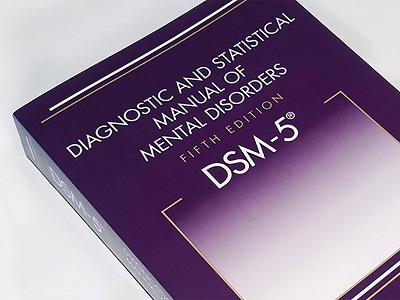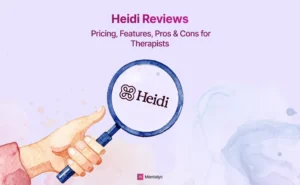In the enchanting tapestry of the human experience, the mind stands as a mesmerizing masterpiece, woven with threads of intricacy and enigma. Its labyrinthine corridors hold the keys to our joys and sorrows, our triumphs and tribulations.
I’ve always pondered: Is it possible to create a world where empathy and insight converge to illuminate the darkest corners of the human psyche? I want you to imagine a world where the challenges that individuals face are met not with judgment, but with a compassionate hand of support. Well, there exists a lodestone of wisdom that guides the seekers and healers on this path – the Fifth Edition of the Diagnostic and Statistical Manual of Mental Disorders, fondly known as the DSM-5.
Like an ancient map revealing uncharted territories, the DSM-5 unfolds before us, pages whispering tales of significance, evolution, and impact. It is more than a mere compendium; it is a living testament to the profound connection between science and humanity. Through its pages, mental health professionals and patients alike embark on a shared odyssey – a voyage that leads to self-discovery, understanding, and the promise of healing.
Join us as we dive headfirst into the depths of the DSM-5, exploring the hidden gems it holds, and uncovering the transformative power it wields. So, dear reader, fasten your seatbelt and prepare to set sail on a narrative adventure that will forever alter the way you perceive the complexities of the human mind.

New! Transfer your notes to EHR with a single click. No more copy-pasting.
What is the DSM-5?
A powerful reference book revered by experts and professionals alike, we are talking about the Diagnostic and Statistical Manual of Mental Disorders, known as the “DSM.”
This literary masterpiece is meticulously crafted by the esteemed American Psychiatric Association (APA), who pour their wisdom into every page, making it an indispensable resource for understanding the intricacies of the human mind.
Now, you might wonder, what does that “5” signify? Well, it signifies the fifth and most recent edition of this masterpiece, aptly named DSM-5. Back in the spring of 2013, this groundbreaking edition emerged, shining a brilliant light on the ever-evolving landscape of mental health. And if that’s not impressive enough, the APA graced us with a revised version in March 2022, aptly called the DSM-5-TR, where “TR” stands for “text revision.”
A word of caution, though, as we venture into the captivating world of the DSM-5: This reference book is primarily tailored for experts and seasoned professionals in the field. However, don’t fret if you’re not an expert, for its technical contents can still provide fascinating insights and knowledge for curious minds. But remember, this reference book should never be a replacement for seeking guidance from a skilled and qualified mental health or medical provider.
What Is the Role of the DSM-5?
Accurate diagnosis is the first and foremost step when addressing any health condition, be it physical or psychological. This is where the DSM-5 plays a crucial role by offering precise and comprehensive definitions of mental health and neurological conditions. That is, the DSM-5 furnishes in-depth insights along with illustrative instances of the signs and symptoms of such conditions.
Beyond merely elucidating and characterizing mental health conditions, the DSM-5 categorizes them into distinct groups. This classification enhances the ability of healthcare practitioners to precisely diagnose conditions and differentiate them from ailments that may present analogous signs and symptoms.
How was the content of DSM-5 developed?
The development process of the DSM-5 involved a collaborative effort by over 160 mental healthcare professionals worldwide, encompassing psychiatrists, psychologists, and experts from various related fields. Additionally, hundreds of other professionals served as advisers on specific topics, ensuring a comprehensive approach. Field trials and tests were also conducted to refine the content.
For the DSM-5-TR, the APA engaged many of the original contributors from the initial DSM-5 release, resulting in the direct involvement of over 200 professionals in its development.
Evolution and Key Changes
Throughout its evolution, the DSM has undergone several revisions and updates. The DSM-5, released in 2013, brought significant changes compared to its predecessor, the DSM-IV. Some key modifications include:
a. Dimensional Approach: The DSM-5 introduced a dimensional approach, recognizing that mental health exists on a spectrum rather than in strict categories. This approach considers the severity and intensity of symptoms, allowing for a more nuanced understanding of mental health conditions.
b. Cultural Considerations: DSM-5 incorporates cultural factors that can influence the presentation of mental disorders. This inclusion acknowledges the importance of cultural context in diagnosing and treating individuals from diverse backgrounds.
c. New Disorders and Reclassification: The DSM-5 added new disorders, such as Binge Eating Disorder and Hoarding Disorder, and reclassified certain conditions. For example, Asperger’s Syndrome is now included under the broader term “Autism Spectrum Disorder.”
Navigating the DSM-5
The DSM-5 comprehensively addresses a wide array of subjects pertaining to mental health conditions and their intricately connected relationship with brain function. While its primary focus lies in the realm of mental health, it also delves into the exploration of brain-related conditions and concerns. Within its pages, one can find diagnostic codes that facilitate seamless correlation between conditions and the World Health Organization’s International Classification of Diseases and Related Health Problems, 10th Edition (ICD-10), streamlining the diagnostic process for healthcare providers.
The DSM-5 is structured into three distinct sections, each serving a specific purpose:
- Section I: DSM-5 Basics: This segment elucidates the appropriate way of using the DSM-5 by professionals in their practice.
- Section II: Diagnostic Criteria and Codes: Occupying the largest portion of the book, this section is a comprehensive compilation of distinct chapters, each dedicated to various types of conditions. Within these chapters, precise definitions and a comprehensive explanation of each condition are meticulously expounded.
- Section III: Emerging Measures and Models: This particular section is a repository of vital information concerning specific assessment tools, serving as invaluable guidelines for the diagnosis of certain conditions. Additionally, it encompasses a thoughtful exploration of how cultural disparities may influence the diagnostic process. Furthermore, it features a dedicated chapter devoted to conditions earmarked for potential inclusion in future editions of the DSM, albeit pending further rigorous study and examination.
More on Section II of the DSM
The DSM-5 encompasses an array of discernible conditions, spanning a diverse spectrum:
| Neurodevelopmental Disorders | 1. Autism spectrum disorder |
|---|---|
| 2. Attention-deficit/hyperactivity disorder (ADHD) | |
| 3. Learning disorders (dyslexia, dyscalculia, etc.) | |
| Schizophrenia Spectrum and Other Psychotic Disorders | 1. Schizophrenia |
| 2. Schizoaffective disorder | |
| 3. Delusional disorder | |
| Bipolar and Related Disorders | 1. Bipolar I and bipolar II disorders |
| 2. Cyclothymic disorder | |
| Depressive Disorders | 1. Major depressive disorder |
| 2. Persistent depressive disorder | |
| Anxiety Disorders | 1. Generalized anxiety disorder |
| 2. Social anxiety disorder | |
| 3. Separation anxiety disorder | |
| 4. Panic disorder | |
| 5. Phobias | |
| Obsessive-Compulsive and Related Disorders | 1. Obsessive-compulsive disorder (OCD) |
| 2. Hoarding disorder | |
| 3. Body dysmorphic disorder | |
| 4. Skin-picking disorder and hair-pulling disorder | |
| Trauma and Stressor-Related Disorders | 1. Post-traumatic stress disorder (PTSD) |
| 2. Acute stress disorder | |
| 3. Adjustment disorder | |
| Dissociative Disorders | 1. Dissociative identity disorder |
| 2. Dissociative amnesia | |
| 3. Depersonalization/derealization disorder | |
| Somatic Symptom and Related Disorders | 1. Somatic symptom disorder |
| 2. Illness anxiety disorder | |
| 3. Functional neurological symptom disorder (conversion disorder) | |
| Feeding and Eating Disorders | 1. Anorexia nervosa |
| 2. Bulimia nervosa | |
| 3. Binge-eating disorder | |
| 4. Pica | |
| Elimination Disorders | 1. Enuresis (a group of disorders that includes bedwetting) |
| Sleep-Wake Disorders | 1. Insomnia disorder |
| 2. Narcolepsy | |
| 3. Sleep apnea disorders | |
| 4. Nightmare disorder | |
| 5. Restless legs syndrome | |
| Sexual Dysfunctions | 1. Sexual dysfunctions |
| Gender Dysphoria | 1. Gender dysphoria-related disorders |
| Disruptive, Impulse-Control and Conduct Disorders | 1. Oppositional defiant disorder |
| 2. Antisocial personality disorder | |
| 3. Kleptomania | |
| 4. Pyromania | |
| Substance-Related and Addictive Disorders | 1. Alcohol use disorder |
| 2. Inhalant use disorder | |
| 3. Opioid use disorder | |
| 4. Withdrawal-related symptoms | |
| Neurocognitive Disorders | 1. Delirium |
| 2. Alzheimer’s disease | |
| 3. Parkinson’s disease | |
| 4. Huntington’s disease | |
| 5. Traumatic brain injury | |
| Personality Disorders | 1. Borderline personality disorder (BPD) |
| 2. Narcissistic personality disorder | |
| Paraphilic Disorders | 1. Sexual behavior disorders |
| Other Mental Disorders and Additional Codes | Conditions that don’t match the definition of another condition, but that still significantly affect someone’s life |
| Medication-Induced Movement Disorders and Other Adverse Effects of Medication | 1. Tardive dyskinesia |
| 2. Neuroleptic malignant syndrome | |
| Other Conditions That May Be a Focus of Clinical Attention | These include circumstances or behaviors that aren’t conditions, but that may affect or happen in relation to diagnosable conditions. Examples include self-harm and suicidal behaviors, a history of any type of abuse, unemployment, etc. |
How to Cite the DSM-5
When citing the DSM in APA Style, the references for diagnostic manuals should be formatted following the guidelines for books, while references for entries within the diagnostic manuals should adhere to the format for edited book chapters. The American Psychological Association offers guidance on citing materials from the DSM-5, which can be found in details here: https://apastyle.apa.org/style-grammar-guidelines/references/examples/diagnostic-manual-references
Is the DSM-5 accessible to the general populace?
Certainly, the DSM-5 is readily obtainable through various channels, including reputable brick-and-mortar bookshops and virtual marketplaces. In addition, numerous public libraries house copies of this compendium; however, it is worth noting that certain libraries may confine its usage to on-site perusal exclusively, precluding the option of borrowing.
While both the DSM-5 and its derivative, the DSM-5-TR, are indeed accessible to the wider public, it is paramount to bear in mind that their primary recipients are practitioners in the field. Consequently, the contents encapsulated within these volumes are profoundly intricate, thereby rendering them potentially perplexing to the layperson.
It is judicious to eschew employing the DSM-5 or DSM-5-TR as a substitute for consulting with a qualified medical or mental health expert. To elaborate, one can regard the DSM-5 in a manner akin to perusing a manual on aviation. Yes, such material provides a certain intrigue, yet it cannot serve as a viable replacement for the comprehensive formal instruction and rigorous training essential to attain the status of a proficient aviator.
A Word of Wisdom
At Mentalyc, we understand that the path to mastery can sometimes be daunting. But fret not, for we are here to provide you with the support and guidance you need. Our mission is to assist you in harnessing the full potential of note-taking and to accompany you on this transformative journey.
Remember, you’ve got this! Each step you take towards improving your note-taking skills is a step towards a brighter, more empowered future. Let’s walk this path together, hand in hand, learning from experiences and growing together.
So, don’t hesitate any longer. Subscribe to Mentalyc and join our tribe of avid therapists and enthusiastic note-takers. Together, we will seize the opportunities that come our way and tackle challenges with confidence!
References
- Surís A, Holliday R, North CS. The Evolution of the Classification of Psychiatric Disorders. (https://www.ncbi.nlm.nih.gov/pmc/articles/PMC4810039/) Behav Sci (Basel). 2016;6(1):5.
- American Psychiatric Association | psychiatry.org. DSM History. (https://www.psychiatry.org/psychiatrists/practice/dsm/history-of-the-dsm)
Disclaimer
All examples of mental health documentation are fictional and for informational purposes only.
Why other mental health professionals love Mentalyc

“Having Mentalyc take away some of the work from me has allowed me to be more present when I’m in session with clients … it took a lot of pressure off.”
LPC

“A lot of my clients love the functionality where I can send them a summary of what we addressed during the session, and they find it very helpful and enlightening.”
Therapist

“It takes me less than 5 minutes to complete notes … it’s a huge time saver, a huge stress reliever.”
Licensed Marriage and Family Therapist

“It’s so quick and easy to do notes now … I used to stay late two hours to finish my notes. Now it’s a breeze.”
Licensed Professional Counselor






